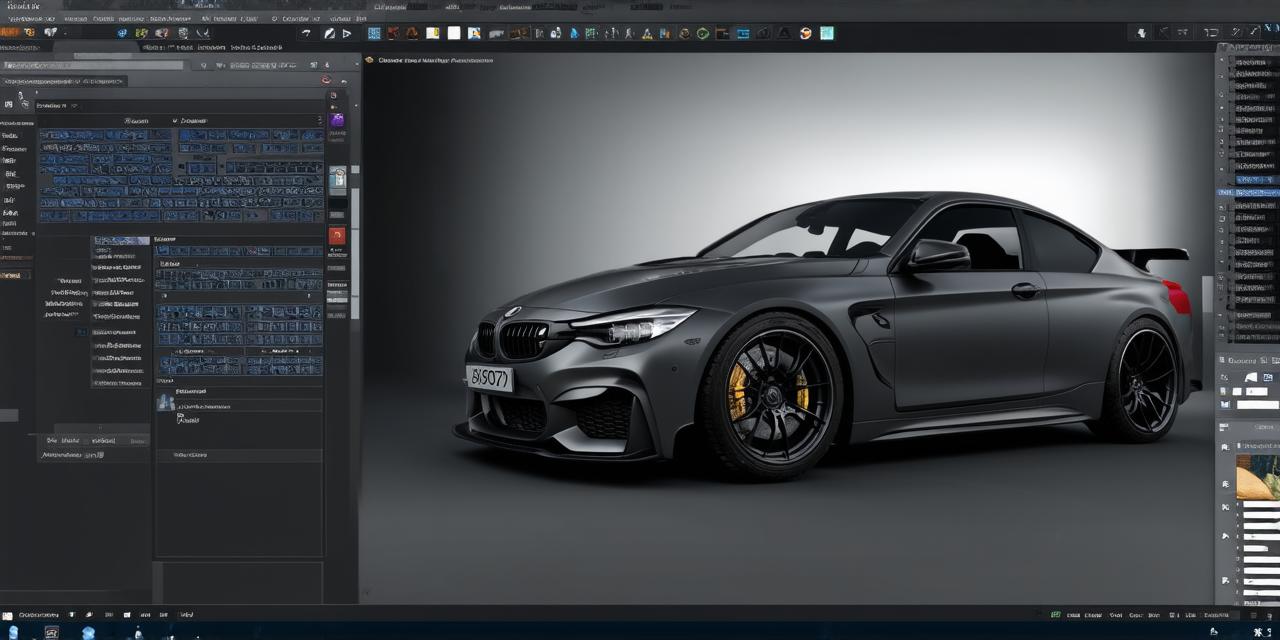3D Modeling Software for Unity
Unity is a popular game engine that supports various 3D modeling software for creating and importing 3D models. Here are some of the most commonly used 3D modeling software for working with Unity:

Blender
Blender is an open-source 3D modeling software that offers a wide range of features for creating 3D graphics. It has an intuitive user interface and allows you to create anything from simple objects to complex scenes with ease. Blender also integrates well with Unity through the Unity Add-Ons, which provides support for importing and exporting 3D models between the two platforms.
Maya
Maya is a commercial 3D modeling software that is widely used in the gaming industry for creating complex 3D graphics. It offers a powerful set of tools for sculpting, texturing, and animation, as well as integration with Unity through the Unity Importer plugin.
ZBrush
ZBrush is another commercial 3D modeling software that is widely used in the gaming industry. It offers advanced sculpting tools for creating highly detailed 3D models, as well as integration with Unity through the Unity Add-Ons.
3DS Max
3DS Max is a commercial 3D modeling software that offers a wide range of features for creating 3D graphics. It integrates well with Unity through the Unity Importer plugin and is widely used in the gaming industry for creating complex scenes.
Fusion 360
Fusion 360 is a cloud-based 3D modeling software that offers a wide range of features for creating 3D models, including CNC machining and simulation capabilities. It also integrates well with Unity through the Unity Add-Ons and is widely used in the gaming industry for creating complex scenes.
Substance Painter
Substance Painter is a commercial 2D and 3D painting software that offers a powerful set of tools for texturing and material creation. It integrates well with Unity through the Unity Add-Ons and is widely used in the gaming industry for creating highly detailed 3D graphics.
Features and Capabilities
All of the above-mentioned 3D modeling software can export models in various formats such as FBX, OBJ, STL, etc. which can be imported into Unity. The process of importing 3D models into Unity is straightforward and can be done through the Assets window in Unity.
Animation
All of the above-mentioned 3D modeling software offers animation tools that allow you to create animated scenes with ease. You can export animations from these tools and import them into Unity, where you can continue to work on them using Unity’s built-in animation tools.
Texturing and Material Creation
All of the above-mentioned 3D modeling software offers texturing and material creation tools that allow you to create highly detailed 3D models with realistic textures and materials. You can export these textures and materials from these tools and import them into Unity, where you can continue to work on them using Unity’s built-in texturing and material creation tools.
Lighting and Rendering
All of the above-mentioned 3D modeling software offers lighting and rendering capabilities that allow you to create stunning 3D graphics with realistic lighting effects. You can export these settings from these tools and import them into Unity, where you can continue to work on them using Unity’s built-in lighting and rendering tools.
Collision Detection and Response
All of the above-mentioned 3D modeling software offers collision detection and response capabilities that allow you to create interactive scenes with realistic physics. You can export these settings from these tools and import them into Unity, where you can continue to work on them using Unity’s built-in collision detection and response tools.
Scripting
All of the above-mentioned 3D modeling software offers scripting capabilities that allow you to create interactive scenes with custom behavior. You can export these scripts from these tools and import them into Unity, where you can continue to work on them using Unity’s built-in scripting tools.
Best Practices for Working with 3D Models in Unity
When working with 3D models in Unity, it is important to optimize them for performance. This includes reducing the number of polygons, textures, and materials used in your models, as well as using LOD (Level of Detail) techniques to reduce the visual impact on distant objects.
Texture atlas is a technique that allows you to combine multiple small textures into one larger texture, reducing the number of draw calls and improving performance. This can be especially useful when working with complex 3D models that have many small textures.
Prefabs are reusable objects that can be used throughout your scene, making it easier to manage and modify your content. This is especially useful when working with complex 3D models that need to be used in multiple places throughout your scene.
Layers allow you to group objects together based on their functionality or type, making it easier to work with them in Unity. This can help to keep your scenes organized and make it easier to manage complex 3D models.
Version control is a system that allows you to track changes to your code and assets over time. This is especially useful when working with multiple developers on the same project, as it allows you to keep track of changes and collaborate more effectively.
